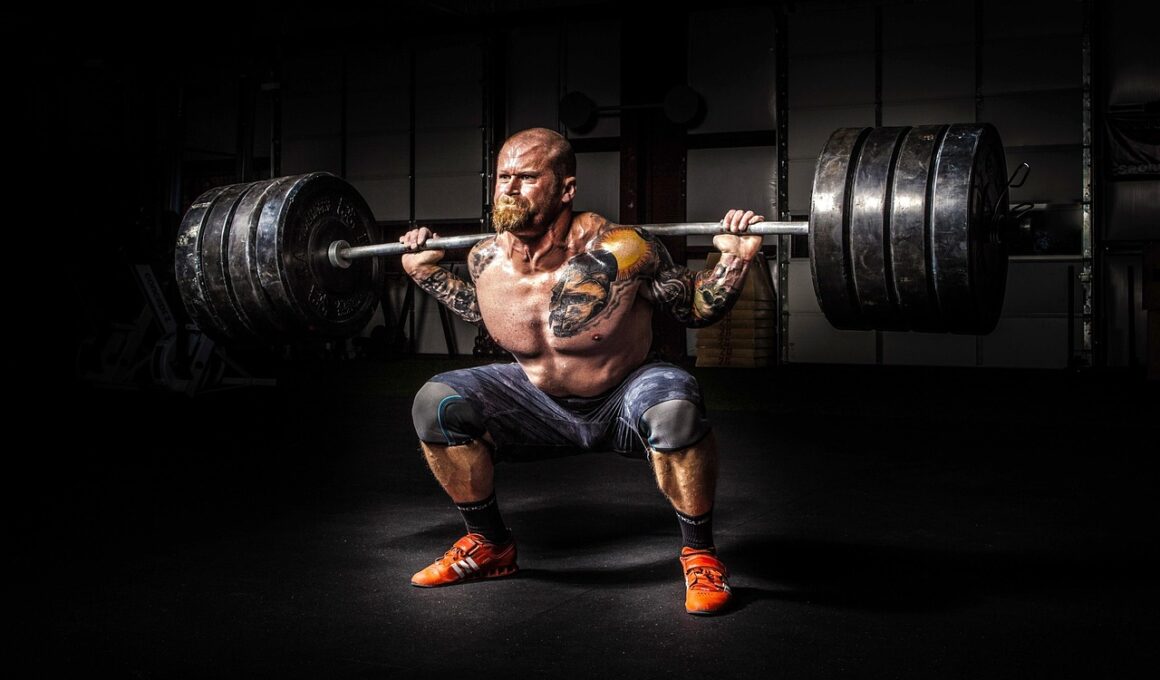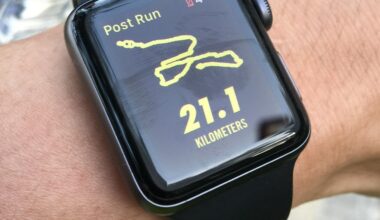High-Intensity Training Methods for Bodybuilding Competitors
High-intensity training (HIT) has transformed the landscape of bodybuilding for competitors seeking to maximize their physique and performance. This method focuses on pushing muscles to their limits, leading to significant muscle hypertrophy. HIT can incorporate various strategies, such as drop sets, supersets, and compound exercises that recruit multiple muscle groups. By increasing the intensity of workouts, competitors can stimulate more muscle fibers, achieving better growth and strength adaptations. The key to success with HIT is to properly balance periods of high effort with adequate recovery, ensuring that muscles have time to repair. Proper nutrition plays a vital role in supporting the demanding nature of high-intensity training. Consuming sufficient protein and maintaining a well-rounded diet will help competitors recover and fuel their bodies effectively. Both physical and mental preparation are essential, making commitment and dedication crucial components for anyone engaging in such an intense regimen. Remember to monitor progress periodically, adjusting the frequency and load to match endurance levels. HIT proponents often emphasize focusing on form to maximize benefits while minimizing injury risks. It’s important to listen to the body, adapting routines as necessary for long-term success.
Understanding Different Training Techniques
As bodybuilding competitors embrace high-intensity training, they often utilize different techniques designed to maximize effectiveness. One popular method is drop sets, which involves continuing an exercise with reduced weights immediately after reaching muscle failure. This approach enables competitors to extend their set times and create additional micro-tears in muscle fibers, promoting growth. Another technique is the superset, where two exercises are performed back-to-back without rest. This increases workout intensity and gets the heart rate up, leading to better cardiovascular conditioning as well as muscle endurance. Circuit training, on the other hand, combines various exercises targeting different muscle groups in a sequence, allowing for less rest and a more holistic approach to fitness. Incorporating these methods can help maintain a high metabolic rate even after the workout has concluded. Furthermore, bodyweight exercises can also be integrated into routines without equipment, providing flexibility and convenience. Many trainers recommend varying techniques periodically to keep competitors motivated while preventing plateaus. It is essential to tailor these methods to individual needs, paying attention to muscular weaknesses or areas needing more focus based on specific goals.
Exercise selection is equally crucial in high-intensity training since compound movements offer the greatest benefits to competitors. Exercises, such as squats, deadlifts, bench presses, and rows, are excellent for maximizing mass and strength, allowing for heavier loads. Incorporating isolation exercises can further enhance weak points and support overall symmetry. A well-rounded program should introduce explosive movements like power cleans and box jumps, which not only promote strength but also improve overall athleticism. Those engaged in HIT should prioritize form to avoid injuries and achieve optimal results. Track records and consistency are critical to discovering when intensity levels may need adjusting. Many athletes take advantage of technology, using fitness apps to help assess and maintain their workout metrics. Recovery strategies, including mobility work and proper hydration, are essential to support this demanding style of training. Incorporating active recovery days is also beneficial for muscular recovery and fatigue reduction, ensuring that competitors can sustain their training schedules. Always remember that the goal is holistic improvement and not merely lifting heavier weights at the expense of overall body integrity.
The Role of Nutrition in HIT
Nutritional strategies play a significant role in supporting bodybuilders during high-intensity training. To maximize performance, competitors must consume a balanced diet rich in protein, carbohydrates, and healthy fats, timing their meals appropriately. Protein intake is essential for muscle repair and growth, aiming for around 1.2 to 2.2 grams per kilogram of body weight daily. Carbohydrates serve as a key energy source, fueling intense workouts and replenishing glycogen stores post-exercise. Fats also provide energy during prolonged sessions, and the right choices can support overall hormonal balance. Many competitors opt for nutrient-dense meals filled with whole foods to meet their micronutrient requirements. Supplements like branched-chain amino acids (BCAAs) can also aid recovery and reduce muscle soreness. Creatine is another favored supplement, improving strength and boosting muscle gains. Hydration remains crucial when engaging in high-intensity workouts, as dehydration can severely limit performance and recovery. Keeping a food diary can help identify any dietary deficiencies, allowing for timely adjustments. Continuous education about new dietary trends and evidence-based meal plans can empower competitors to make informed nutritional choices to support their intense training.
Setting realistic goals is critical for bodybuilding competitors to succeed in high-intensity training. Specific, measurable, achievable, relevant, and time-bound (SMART) goals should guide workouts and overall progress. Establishing short-term milestones helps maintain motivation throughout the process. Progress tracking is essential, utilizing tools such as body measurements, photos, and lifting records to assess improvements and adjust routines. Significant focus should be placed on technique refinement to reduce injury risks and optimize performance. During training, adopting a winning mindset fosters resilience against challenges. Mental preparation is just as essential as the physical aspect, and competitors can maintain motivation through visualization techniques, positive affirmation, and meditative practices. Engaging with fellow competitors, in-person or online, cultivates a supportive community to share resources and experiences. Joining local bodybuilding clubs or online forums can provide networking opportunities. Explore varied coaching options, whether virtual or in-person, for personalized training plans. Ultimately, the fusion of mental tenacity, proper training, and nutrition will enable competitors to excel in their bodybuilding journeys. Consistency, dedication, and adaptability remain the cornerstones of successful bodybuilding endeavors, especially under high-intensity methods.
Recovery Techniques for Muscle Growth
Effective recovery techniques are paramount in high-intensity training, allowing competitors to maximize muscle growth. First, getting adequate sleep has been proven essential for recovery and overall health. Aim for seven to nine hours, promoting muscle repair and growth hormone release. Active recovery days, featuring low-impact activities like walking or swimming, help reduce muscle soreness and increase blood flow, aiding in nutrient delivery. Implementing stretching routines helps maintain flexibility and prevent injury, making yoga and foam rolling beneficial practices. Additionally, incorporating practices such as contrast baths, where hot and cold water exposure alternates, can enhance circulation and alleviate muscle tension. Nutrition again comes into play, with post-workout meals focusing on replenishing glycogen stores and providing protein for muscle synthesis. Consider scheduling regular massages or physical therapies to target specific pain points and increase joint mobility. Listening to body signals is crucial; if fatigue persists despite adequate recovery efforts, evaluating training intensity may be necessary. Lastly, journals can help competitors reflect on their recovery progress and identify areas for improvement to ensure peak performance during each workout session.
In conclusion, high-intensity training methods for bodybuilding competitors offer unparalleled opportunities for growth and strength enhancement. By understanding and applying various techniques like drop sets, supersets, and compound movements, bodybuilders can dramatically increase their training effectiveness. Nutrition and hydration play a vital role in fortifying competitors to sustain intense workouts, while recovery practices help to optimize long-term gains and performance. Goal-setting and tracking progress remain essential for motivation and adaptability during training. Embracing community support from fellow competitors bolsters resilience against challenges faced in high-intensity training programs. Mental fortitude is indispensable, integrating visualization and a strong mindset into training routines. Ultimately, the synergistic relationship between training intensity, proper nutrition, effective recovery, and unwavering dedication will pave the way for success in bodybuilding competitions. Before initiating any high-intensity training program, seeking professional guidance from trainers to tailor specific routines based on personal goals and body types is advisable. Setting a solid foundation for this demanding style of training will not only yield impressive results but will also instill a love for the art of bodybuilding, fostering a long-lasting commitment to fitness.


